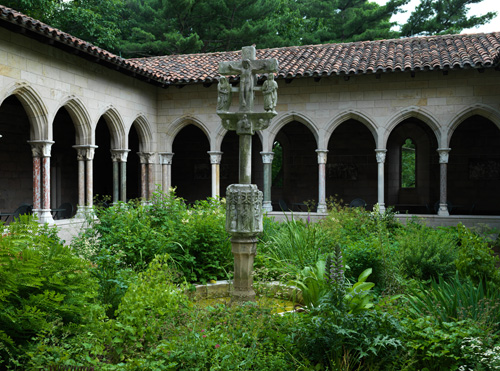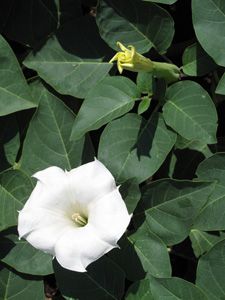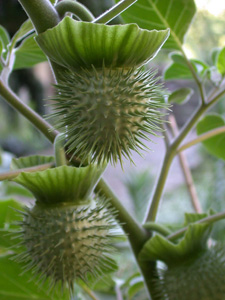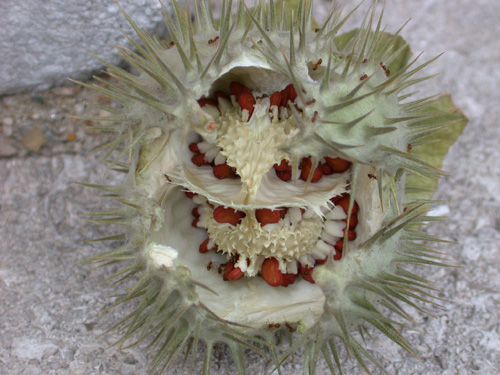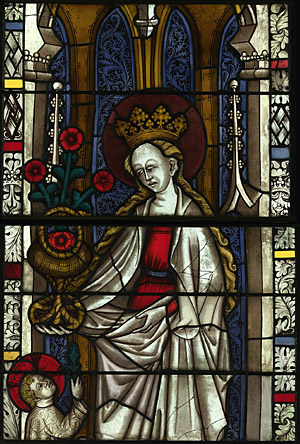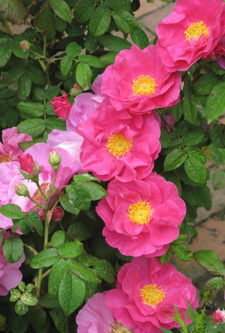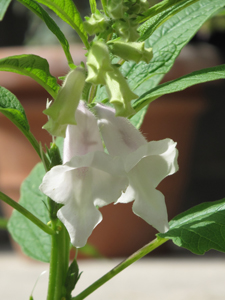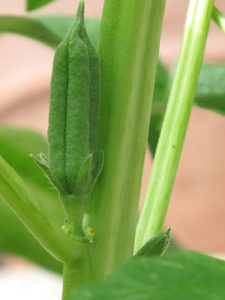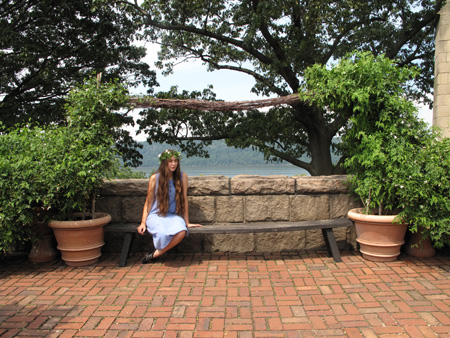
Arbors covered with vining or climbing plants, also called bowers, were a common feature of medieval pleasure gardens, and women are often shown seated in their shade. Maggie Fitzpatrick, summer intern in the gardens, rests from her labors under a fragrant jasmine bower in Bonnefont garden. The jasmine, grown in terra cotta pots, twines up and around a structure of birch poles and birch brush, lashed together with copper wire and finished with barked wire.?? Photograph by Carly Still
Arbour, arbor, n. A bower or shady retreat, of which the sides and roof are formed by trees and shrubs closely planted or intertwined, or of lattice-work covered with climbing shrubs and plants, as ivy, vine, etc. Forms: ME???15 erber (e, herber(e, ME herbier, erbor, arbre, ME???15 arber, 15 herbor, harber, herbour, arboure (all obs.), 15??? arbour, arbor. (The original characteristic of the ???arbour??? seems to have been the floor and ???benches??? of herbage; in the modern idea (since 16th c. at least) the leafy covering is the prominent feature.)
???OED Online. June 2012. Oxford University Press: http://0-oed.com.library.metmuseum.org/view/Entry/10234 (accessed August 9, 2012).
Arbors covered with vines or roses are frequently depicted in medieval garden representations, often in conjunction with a turf bench or garden seat. Elegant ladies are shown taking their ease, or the Virgin and Child are shown seated in state, as in Stefan Lochner’s famous Madonna of the Rose Bower in Cologne. (For more on turf benches, see “A Green Place to Rest,” March 15, 2010.) Read more »

